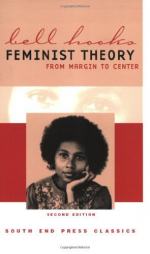
|
| Name: _________________________ | Period: ___________________ |
This quiz consists of 5 multiple choice and 5 short answer questions through Chapters 6 and 7.
Multiple Choice Questions
1. The author opens the Preface to the first edition of the book with a description of which group and its experiences in life?
(a) White French feminists.
(b) Black Americans living in a small town in Kentucky.
(c) White upper class American women.
(d) Upper class black professionals.
2. What major difference between white and black men does the author point out?
(a) White men encouraged women to go to work whereas black men did not.
(b) White men were not as threatened by strong women functioning outside traditional gender roles.
(c) Black men were not as threatened by strong women functioning outside traditional gender roles.
(d) Black men did not trust women who worked outside the home.
3. In Chapter 3, "The Significance of Feminist Movement," the author discusses which of the following themes?
(a) The effects of feminism on foreign policy.
(b) Famous personalities within the feminist movement.
(c) The potential social and political benefits of the feminist movement.
(d) The major shortcomings of the feminist movement.
4. For the author, what is a better way to arrive at a definition of sisterhood?
(a) Through sustained debate.
(b) Through solidarity in the face of all forms of oppression.
(c) By finding out which men are truly oppressive.
(d) The movement does not need a definition of sisterhood.
5. Who has portrayed the relationship between feminism and the family in this way? (See question # 61)
(a) All men.
(b) Most feminists hold this view.
(c) Outsiders to the movement and sometimes feminists in the movement who want to create women-only communities.
(d) The child protective services.
Short Answer Questions
1. In Chapter 1, what key term does the author use to talk about the "racial politic" in the U.S.?
2. Based on your understanding of the two Prefaces, who does the author wish to reach with her work?
3. According to the author, how did early feminists see gender?
4. What notion about women and power do both sexist and traditional feminist culture share?
5. As stated in the 1984 Preface, what is the primary weakness of feminist theory that the author promises to address in her book?
|
This section contains 450 words (approx. 2 pages at 300 words per page) |

|




